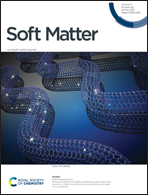Cation-based approach to morphological diversity of diphenylalanine dipeptide structures†
Abstract
Different approaches are taken in order to examine the spontaneous arrangement processes of dipeptide structures. One of these approaches is to examine the effects of common cations on dipeptide structures’ self-assembly processes. In this study, the effects of Al3+, Cu2+, Pb2+, Hg2+, Mg2+, Zn2+, Cd2+, Fe2+ and Ni2+ cations on the self-assembly processes of diphenylalanine (FF) dipeptide molecules were investigated. A detailed examination was made of the self-assembly of FF dipeptides in the presence of Hg2+, and a spherical architecture structure was shown. The morphological diversity resulting from the effects of Hg2+ cations at different concentrations on FF dipeptides was explained using Scanning Electron Microscopy (SEM), X-ray Diffraction, (XRD), and Fourier Transform Infrared Spectroscopy (FTIR) techniques. It is thought that this work will contribute to the indexing of the effects of toxic species such as Hg2+ on dipeptides, which are the smallest peptide units obtained. We think that the examination of FF dipeptides in the structures of amyloid plaques, which are thought to affect neurological disorders such as Alzheimer's and Parkinson's, will prompt further studies.



 Please wait while we load your content...
Please wait while we load your content...